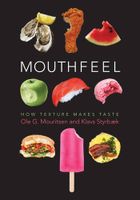Advertisement
Bubbles in Food
Appears in
By Ole Mouritsen and Klavs Styrbæk
Published 2017
The raw ingredients used in food may incorporate air in the form of small pockets between or inside the cells. We are often not aware of them, and in addition, many foods are very compact. So, it would probably come as a surprise to most people that crisp apples contain about 25 percent air; and pears, 5–10 percent.
We love to whisk or beat air into a variety of foods because it results in an exciting and pleasant mouthfeel. Foams, whipped cream, soufflés, fluffy desserts, and meringues are just a few among many examples. In some cases, air in the form of bubbles can make fluid foods, such as cream or egg whites, much stiffer. The stiffness disappears when the food meets the tongue and the palate, as the bubbles burst and run together, allowing the food to flow and lending it a very creamy mouthfeel. The air-filled bubbles in foam can catch and trap aroma substances that are released when the foam collapses in the mouth. In the avant-garde kitchen there are practically no ingredients that escape the chefs’ efforts to make them into foams.

